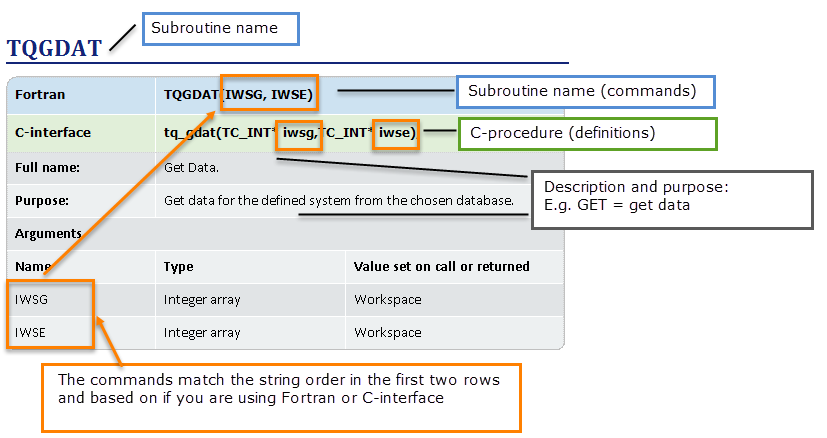TQCSTM
| Fortran |
TQCSTM(IDENT, TEMP, PRESS, IWSG, IWSE) |
|
|---|---|---|
| C-interface |
tq_cstm(TC_STRING stream,TC_FLOAT temp,TC_FLOAT press,TC_INT* iwsg,TC_INT* iwse); |
|
|
Full name: |
Create Stream |
|
|
Purpose: |
To set the system conditions by stream input. Stream calculations are useful when calculating differences between an initial state and a final state. The streams define the initial state of the system components by specifying reactants of different phases at given temperatures and pressures. |
|
|
Comments: |
A stream is a non-reacting media for transferring matter to a reaction zone. A stream may contain several phases at the same given temperature and pressure. Phases with different temperatures and pressures should be grouped into different streams. Several streams can be transferred to a reaction zone. The input constituents of each phase do not react in a stream. |
|
|
Arguments |
||
|
Name |
Type |
Value set on call or returned |
|
IDENT |
Character*24 |
Set as identifier of the stream. |
|
TEMP |
Double precision |
Input temperature of stream. |
|
PRESS |
Double precision |
Input pressure of stream. |
|
IWSG |
Integer array |
Workspace |
|
IWSE |
Integer array |
Workspace |
Note the following conventions to distinguish between the programming languages.
- Routines starting with TQXXX, for example, TQGDAT, are in the Fortran interface
- Routines starting with tq_xxxx, for example tq_gdat, are in the C-interface.
- In Fortran, all routines are subroutines and do not return any values except where explicitly declared as functions.
- All the C procedures are declared as void and do not return any values except where explicitly otherwise declared.
An example of how to read the subroutine definitions.
